The right salt can transform your culinary creations, enhancing flavors, adding texture, or blending seamlessly into dishes. From the clean, flaky texture of kosher salt to the delicate crunch of fleur de sel, each salt type offers unique qualities for specific cooking needs. We’ve curated the top 20 best salts for cooking, backed by insights from chefs and trusted sources, to help home cooks perfect their dishes. Whether you’re seasoning a hearty stew or finishing a delicate dessert, these salts are essential pantry staples.
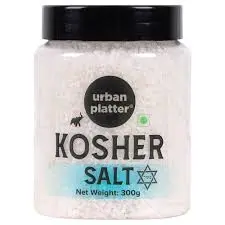
1. Kosher Salt
Kosher salt is a coarse, flaky salt free of additives, valued for its clean taste and ease of use in seasoning. Named for its historical use in koshering meat, it’s a versatile choice for everyday cooking, with brands like Diamond Crystal and Morton’s favored by chefs for their consistent texture.
Its large granules allow precise pinch-and-sprinkle seasoning, making it ideal for brining, roasting, or boiling, as noted in Allrecipes and Yahoo. Unlike finer salts, kosher salt dissolves evenly, ensuring balanced flavor in dishes from grilled meats to pasta water, making it a kitchen workhorse.
Best Uses
- Seasoning steaks before grilling.
- Brining poultry for juicy results.
- Boiling pasta water for flavor.
- Sprinkling over roasted vegetables.
Why It Stands Out
- Flaky texture for precise seasoning.
- Pure, clean flavor without additives.
- Versatile for all cooking methods.
- Chef-favorite.
Ideal For
- Everyday home cooks.
- Precision-driven chefs.
- Brining enthusiasts.
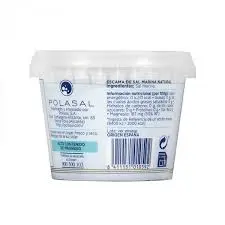
2. Flake Sea Salt
Flake sea salt, harvested through seawater evaporation, features broad, thin crystals that provide a crisp crunch and clean, briny flavor. High-quality examples like Maldon from England are prized for their pyramid-shaped flakes, ideal for finishing dishes with elegance.
Its slow-dissolving texture enhances delicate foods without overwhelming them, as highlighted in Allrecipes and The Spruce Eats. Flake sea salt’s ability to add a burst of flavor and visual appeal makes it a go-to for garnishing salads, seafood, or desserts, favored by gourmet cooks.
Best Uses
- Finishing fresh salads for crunch.
- Sprinkling over chocolate desserts.
- Topping grilled fish with texture.
- Enhancing buttered bread.
Why It Stands Out
- Delicate flakes for slow-dissolving crunch.
- Ideal for gourmet finishing touches.
- Versatile for savory and sweet dishes.
Ideal For
- Gourmet cooks seeking texture.
- Finishing salt enthusiasts.
- Flavor-focused chefs.
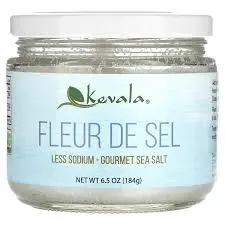
3. Fleur de Sel
Fleur de sel, or “flower of salt,” is a delicate sea salt hand-harvested from the surface of salt ponds, primarily in France’s Guérande region. Its moist, fine crystals and subtle, floral flavor, as seen in brands like Le Saunier de Camargue, make it a premium finishing salt.
Chefs value its crisp texture and nuanced taste for elevating delicate dishes like seafood or caramel desserts, as noted in MasterClass and The Spruce Eats. Its labor-intensive production adds to its luxury appeal, making it perfect for special-occasion dishes where elegance is key.
Best Uses
- Finishing grilled fish for elegance.
- Sprinkling over caramel desserts.
- Topping fresh oysters with flair.
- Enhancing tomato salads with crunch.
Why It Stands Out
- Moist, fine crystals for unique texture.
- Refined, floral flavor profile.
- Elevates special dishes.
Ideal For
- Gourmet chefs seeking luxury.
- Special-occasion cooks.
- Fine dining enthusiasts.

4. Coarse Sea Salt
Coarse sea salt, produced by evaporating seawater, features large, crunchy crystals with a robust, briny flavor. Affordable brands like Jacobsen Salt Co. from Oregon offer high-quality options suitable for cooking hearty dishes or adding a bold finish.
Its rugged texture and strong taste make it ideal for seasoning stews or finishing grilled meats, as noted by The Spruce Eats. Coarse sea salt’s versatility and cost-effectiveness ensure it’s a reliable choice for cooks who prioritize simplicity and impact in their seasoning.
Best Uses
- Seasoning beef stew for flavor.
- Sprinkling over grilled steak for crunch.
- Cooking seafood boils with balance.
- Finishing roasted potatoes with texture.
Why It Stands Out
- Large crystals for bold texture.
- Affordable for everyday use.
- Versatile for cooking and finishing.
Ideal For
- Rustic dish creators.
- Budget-conscious cooks.
- Texture enthusiasts.
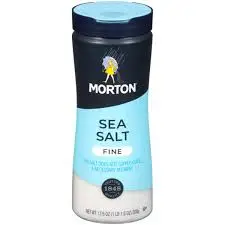
5. Fine Sea Salt
Fine sea salt, derived from evaporated seawater, has small, uniform granules that dissolve quickly, offering a clean, oceanic flavor. Brands like La Baleine provide high-quality options ideal for baking or general cooking where even seasoning is crucial.
Its fine texture makes it a substitute for table salt in recipes requiring precise measurements, as noted by MasterClass. Fine sea salt’s purity and versatility ensure it blends seamlessly into soups, sauces, or baked goods, appealing to cooks who value consistency.
Best Uses
- Baking breads for even seasoning.
- Seasoning sauces and soups.
- Cooking grains with balance.
- Adding to marinades for consistency.
Why It Stands Out
- Small granules for quick dissolving.
- Ideal for precise measurements.
- Versatile for baking and cooking.
Ideal For
- Baking enthusiasts.
- Precision cooks.
- Everyday recipe creators.
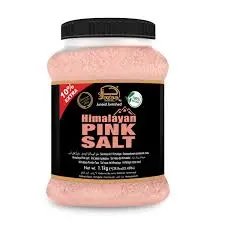
6. Himalayan Pink Salt
Himalayan pink salt, mined from ancient deposits in Pakistan’s Khewra Salt Mine, is known for its rosy hue from iron traces and subtle mineral flavor. Available in fine or coarse grinds from brands like The Spice Lab, it’s used for cooking, grilling, or decorative finishing.
While its health benefits are minimal (CSPI, PrettyOrganicGirl), its aesthetic appeal and mild taste make it popular for seasoning meats or presenting dishes on salt blocks. Its versatility and striking color add visual flair to both everyday and creative cooking, as noted in PrettyOrganicGirl.
Best Uses
- Seasoning grilled meats for flavor.
- Finishing roasted vegetables with color.
- Using in salt grinders for convenience.
- Cooking on salt blocks for presentation.
Why It Stands Out
- Rosy hue for visual appeal.
- Versatile for cooking and decoration.
- Popular for aesthetic dishes.
Ideal For
- Decorative cooks.
- Grilling enthusiasts.
- Visual appeal-focused chefs.
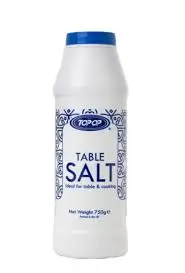
7. Table Salt
Table salt, a finely ground, highly processed salt often fortified with iodine, is a kitchen staple for its affordability and uniform texture. Brands like Morton’s offer iodized versions that help prevent iodine deficiency, a key health benefit noted by CSPI.
Its small granules dissolve quickly, making it ideal for baking or cooking where precise measurements are essential, though it’s less suited for finishing due to its lack of texture (Allrecipes). Table salt’s reliability and low cost ensure it’s indispensable for everyday recipes like breads or pickles.
Best Uses
- Baking cakes for consistency.
- Seasoning soups evenly.
- Cooking rice with balance.
- Adding to pickling brines.
Why It Stands Out
- Iodine supports health (CSPI).
- Ideal for precise baking.
- Reliable for everyday cooking.
Ideal For
- Budget cooks.
- Byahoo enthusiasts.

8. Sel Gris
Sel gris, or gray salt, is a coarse French sea salt harvested from salt ponds, with a grayish hue from mineral-rich clay. Its moist, crunchy texture and robust flavor, as seen in brands like Le Guerandais, make it excellent for cooking hearty dishes or rustic finishing.
Its bold taste complements rich foods like braised meats or roasted vegetables, as noted by MasterClass. Less delicate than fleur de sel, sel gris offers versatility and depth, appealing to cooks who appreciate its earthy character and ability to enhance savory recipes.
Best Uses
- Seasoning braised meats for depth.
- Finishing roasted lamb with texture.
- Cooking root vegetables with flavor.
- Sprinkling over crusty bread.
Why It Stands Out
- Rich mineral flavor for bold dishes.
- Versatile for cooking and finishing.
- Rustic culinary appeal.
Ideal For
- Rustic cuisine lovers.
- Hearty dish cooks.
- Mineral flavor enthusiasts.
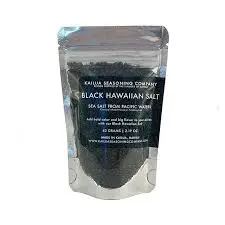
9. Black Hawaiian Salt
Black Hawaiian salt, infused with activated charcoal, is a sea salt with a striking black color and earthy, slightly smoky flavor. Brands like Hawaii Kai offer this salt for finishing, adding visual drama and subtle minerality to traditional Hawaiian dishes.
Its unique appearance makes it ideal for garnishing poke bowls or grilled seafood, as mentioned in Gobble. While less versatile for cooking due to its bold color, it’s a creative choice for cooks seeking to enhance presentation with Hawaiian flair.
Best Uses
- Finishing poke bowls for contrast.
- Sprinkling over grilled fish for drama.
- Topping creamy soups with appeal.
- Enhancing tropical salads.
Why It Stands Out
- Striking black color for presentation.
- Ideal for creative garnishing.
- Hawaiian cultural appeal.
Ideal For
- Creative cooks.
- Hawaiian cuisine fans.
- Presentation-focused chefs.
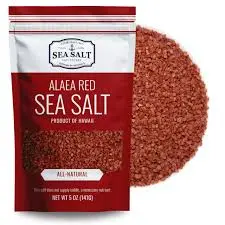
10. Red Hawaiian Salt (Alaea)
Red Hawaiian salt, or Alaea, is a sea salt enriched with volcanic red clay, giving it a vibrant reddish hue and nutty, earthy flavor. Brands like SaltWorks provide this traditional Hawaiian salt for cooking and finishing, especially in dishes like poke.
The clay’s iron content imparts a unique taste that pairs well with seafood and tropical flavors, as noted in Gobble. Its striking color and mild minerality make it a favorite for cooks infusing dishes with Hawaiian heritage and visual appeal.
Best Uses
- Seasoning poke bowls for authenticity.
- Finishing grilled shrimp with color.
- Cooking kalua pork for tradition.
- Sprinkling over fruit salads.
Why It Stands Out
- Vibrant red color for appeal.
- Traditional Hawaiian use.
- Enhances visual presentation.
Ideal For
- Hawaiian cuisine lovers.
- Cultural flavor seekers.
- Visually creative chefs.
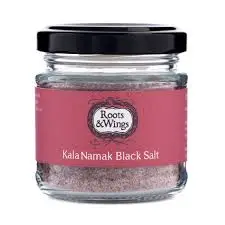
11. Kala Namak (Black Salt)
Kala Namak, or Indian black salt, is a volcanic salt with sulfurous compounds, giving it a distinctive eggy aroma and flavor. Available from brands like The Spice House, it’s widely used in Indian cuisine for vegan dishes or traditional recipes like chaats.
Its pungent smell makes it niche but invaluable for mimicking egg flavors in plant-based cooking, as noted by Gobble. Kala Namak’s unique profile allows cooks to experiment with bold, authentic South Asian flavors in savory and street food recipes.
Best Uses
- Seasoning vegan tofu for eggy flavor.
- Sprinkling over chaat for authenticity.
- Enhancing chutneys with umami.
- Finishing Indian street food.
Why It Stands Out
- Eggy flavor for vegan cooking.
- Bold sulfur aroma adds depth.
- Niche for South Asian cuisine.
Ideal For
- Indian cuisine enthusiasts.
- Vegan cooks.
- Adventurous flavor explorers.
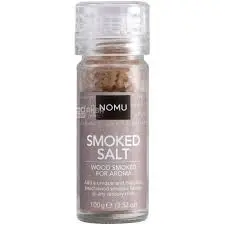
12. Smoked Sea Salt
Smoked sea salt is sea salt infused with natural wood smoke, offering a rich, smoky flavor that enhances grilled or roasted dishes. Brands like Maldon or Jacobsen Salt Co. produce versions with varying smoke intensities for savory and creative applications.
Its versatility allows it to add barbecue-like depth to meats or rim cocktail glasses, as noted by Heinen’s. Smoked sea salt’s bold aroma and taste make it a favorite for cooks seeking to replicate smoky flavors without a grill, adding complexity effortlessly.
Best Uses
- Seasoning grilled steaks for smokiness.
- Sprinkling over roasted vegetables.
- Rimming margarita glasses for flair.
- Enhancing baked beans.
Why It Stands Out
- Rich smoky flavor mimics barbecue.
- Adds depth without extra ingredients.
- Creative for savory and cocktails.
Ideal For
- Barbecue flavor enthusiasts.
- Creative cooks and mixologists.
- Savory dish enhancers.

13. Celtic Sea Salt
Celtic sea salt, harvested from Brittany’s tidal pools, is a moist, mineral-rich salt with a grayish hue and briny flavor. Brands like Selina Naturally offer unrefined versions that preserve trace minerals, appealing to health-conscious cooks.
Its coarse texture and robust taste suit hearty dishes like stews or roasted meats, as noted by PrettyOrganicGirl. Celtic sea salt’s natural purity and versatility make it a reliable choice for both cooking and finishing in rustic recipes.
Best Uses
- Seasoning beef stew for depth.
- Sprinkling over roasted pork.
- Cooking seafood with minerality.
- Finishing grilled vegetables.
Why It Stands Out
- Mineral-rich for natural flavor.
- Unrefined for health-conscious cooking.
- Versatile for rustic dishes.
Ideal For
- Health-conscious cooks.
- Rustic dish creators.
- Mineral flavor lovers.

14. Rock Salt
Rock salt, mined from underground deposits, is a coarse, unrefined salt with a pure, mineral flavor. Brands like Morton’s offer food-grade versions suitable for cooking, brining, or using in salt grinders for everyday seasoning.
Its large crystals provide bold seasoning for hearty dishes or brines, as noted by MasterClass. While less common for finishing due to its rugged texture, rock salt’s affordability and versatility make it a practical choice for cooks needing a robust, budget-friendly salt.
Best Uses
- Brining turkey for flavor.
- Seasoning roasted meats.
- Using in salt grinders for convenience.
- Cooking stews with balance.
Why It Stands Out
- Coarse crystals for bold seasoning.
- Affordable for bulk cooking.
- Versatile for brining and seasoning.
Ideal For
- Budget cooks.
- Brining enthusiasts.
- Hearty dish creators.

15. Truffle Salt
Truffle salt combines sea salt with truffle pieces or oil, delivering an intense, earthy aroma and luxurious flavor. Brands like Sabatino Tartufi offer this specialty salt for finishing, adding a gourmet, umami-rich profile to dishes.
Its bold taste transforms simple foods like eggs or pasta into decadent creations, as noted by Heinen’s. Used sparingly, truffle salt’s high impact and cost make it a favorite for cooks aiming to impress with sophisticated flavors in special-occasion meals.
Best Uses
- Sprinkling over scrambled eggs for luxury.
- Finishing truffle pasta with depth.
- Topping roasted mushrooms with umami.
- Enhancing mashed potatoes.
Why It Stands Out
- Intense truffle flavor for gourmet dishes.
- Elevates simple ingredients.
- Ideal for special occasions.
Ideal For
- Gourmet cooks.
- Special-occasion chefs.
- Umami flavor lovers.
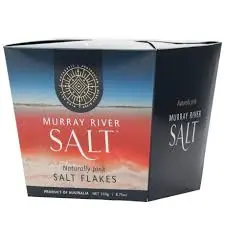
16. Murray River Pink Salt
Murray River pink salt, sourced from saline aquifers in Australia’s Murray-Darling Basin, is a flaky sea salt with a delicate pink hue from carotenoids, offering a mild, sweet flavor for finishing. Brands like Murray River Salt offer this salt for finishing, with a mild, sweet flavor that enhances dishes.
Its light texture and attractive color make it ideal for garnishing seafood or fruit desserts, as noted by The Spruce Eats. Murray River pink salt’s artisanal appeal and gentle taste appeal to cooks who value aesthetics and subtle flavor in presentations.
Best Uses
- Finishing grilled prawns for elegance.
- Sprinkling over fruit tarts.
- Topping fresh salads with crunch.
- Enhancing roasted nuts.
Why It Stands Out
- Delicate pink flakes for appeal.
- Ideal for finishing delicate dishes.
- Artisanal aesthetic value.
Ideal For
- Aesthetic-focused cooks.
- Delicate flavor enthusiasts.
- Finishing salt lovers.
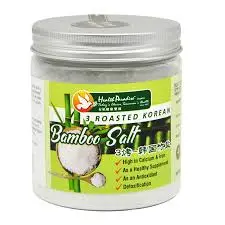
17. Bamboo Salt
Bamboo salt, a Korean specialty, is sea salt roasted in bamboo stalks, imparting a unique mineral flavor and subtle smokiness. Brands like Insan Bamboo Salt produce this salt for cooking and finishing in Asian cuisine, valued for its traditional appeal.
Its complex flavor enhances soups, stir-fries, or grilled dishes, as noted by MasterClass. While its health claims are unverified, bamboo salt’s artisanal production and bold profile make it a niche choice for cooks exploring Asian flavors and methods.
Best Uses
- Seasoning kimchi soup for depth.
- Sprinkling over grilled tofu.
- Finishing stir-fried vegetables.
- Enhancing rice dishes.
Why It Stands Out
- Unique bamboo-roasted flavor.
- Artisanal Korean production.
- Niche for Asian cuisine.
Ideal For
- Asian cuisine enthusiasts.
- Experimental cooks.
- Traditional flavor seekers.

18. Persian Blue Salt
Persian blue salt, a rare rock salt mined in Iran, features a stunning blue hue from sylvite, with an intense, slightly sweet flavor and crunchy texture for gourmet dishes. Brands like SaltWorks offer this salt for finishing, with an intense, slightly sweet flavor and crunchy texture for gourmet dishes.
Its striking appearance and bold taste pair well with delicate foods like seafood or desserts, as noted by MasterClass. Persian blue salt’s rarity and visual appeal make it a standout for cooks creating memorable, high-end presentations.
Best Uses
- Finishing seared tuna for elegance.
- Sprinkling over white chocolate desserts.
- Topping fresh salads with crunch.
- Enhancing grilled vegetables.
Why It Stands Out
- Rare blue hue for presentation.
- Ideal for gourmet finishing.
- Luxurious appeal.
Ideal For
- Gourmet presentation enthusiasts.
- Luxury dish creators.
- Visual appeal-focused cooks.

19. Herb-Infused Salt
Herb-infused salt combines sea or kosher salt with dried herbs like rosemary or thyme, offering a flavorful seasoning shortcut. Brands like The Spice Lab produce blends that add complexity to dishes with minimal effort, ideal for cooking or finishing.
Its versatility enhances roasted meats, vegetables, or breads, as noted by Heinen’s. Herb-infused salt’s aromatic depth allows cooks to experiment with custom profiles, making it a creative choice for streamlining seasoning in diverse recipes.
Best Uses
- Seasoning roasted chicken with rosemary salt.
- Sprinkling thyme salt over vegetables.
- Finishing focaccia with herb blends.
- Enhancing soups with flavor.
Why It Stands Out
- Herb infusion adds complexity.
- Customizable for recipes.
- Convenient for quick seasoning.
Ideal For
- Creative seasoning enthusiasts.
- Time-saving cooks.
- Herb flavor lovers.
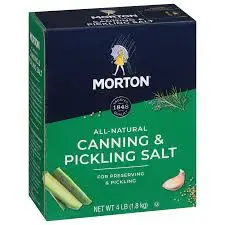
20. Pickling Salt
Pickling salt is a fine, pure salt free of additives or anti-caking agents, designed for brining and preserving. Brands like Morton’s offer this salt for its ability to dissolve clearly in brines, ensuring crisp, flavorful pickles.
Its clean taste and fine texture make it essential for pickling vegetables or curing meats, as noted by MasterClass. Pickling salt’s simplicity and reliability appeal to cooks who prioritize clarity and consistency in preservation recipes.
Best Uses
- Brining cucumbers for pickles.
- Curing meats for preservation.
- Pickling beets with clarity.
- Seasoning fermentation recipes.
Why It Stands Out
- Pure, additive-free for clear brines.
- Fine texture.
- Essential for pickling and curing.
- Reliable for preservation.
Ideal For
- Pickling enthusiasts.
- Preservation cooks.
- Clarity-focused chefs.
Conclusion
The right salt can elevate your dishes, combining flavor, texture, and versatility to create culinary masterpieces. From the precise seasoning of kosher salt to the luxurious crunch of fleur de sel, these 20 salt types offer something for every cook and cuisine. Whether you’re boiling, roasting, or finishing, this list equips you with the best salts to make every meal shine with taste and finesse. Keep these in your pantry to ensure your dishes are always perfectly seasoned.
FAQs
What Makes a Good Cooking Salt?
A good cooking salt offers clean flavor, appropriate texture (fine for baking, coarse for seasoning), and versatility. Kosher and sea salts are favored for their purity and ease of use, as noted by Allrecipes and Yahoo.
Can I Use Budget Salts for Cooking?
Yes, budget salts like table salt or coarse sea salt are effective for everyday cooking and baking. They provide consistent flavor and affordability, with iodized versions offering health benefits (CSPI).
How Do I Store Salts?
Store salts in airtight containers in a cool, dry place to prevent moisture absorption. Specialty salts like fleur de sel should be sealed to maintain texture (The Spruce Eats).
How Do I Choose the Right Salt?
Match the salt’s texture and flavor to your dish: fine for baking, coarse for seasoning, flaky for finishing. Consider purity and origin for quality (MasterClass, PrettyOrganicGirl).
Are All Salts Safe for Health?
Most salts are safe in moderation, but iodized table salt prevents iodine deficiency (CSPI). Specialty salts like Himalayan pink offer minimal health benefits, so balance is key.

Leave a Reply